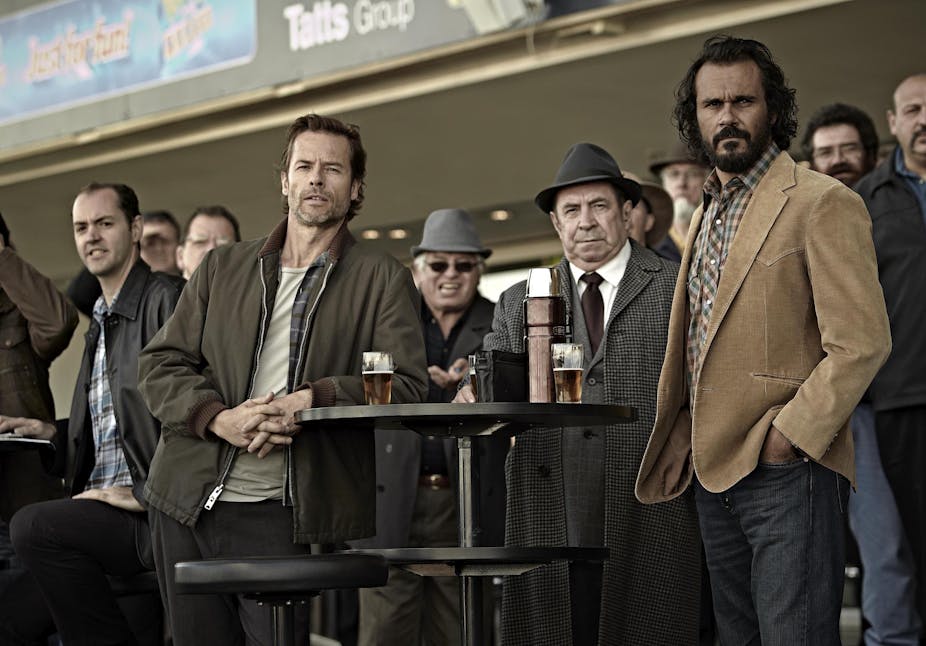Television is always located somewhere, even if the place is imaginary. And programs such as Dr Who move effortlessly between real and imagined worlds.
Once, mid-Pacific (or mid-Atlantic) was a term for productions that stripped away the identity of the actual location in hope that the lack of identity would give the narrative a kind of universality.
Often, however, this stifled dramatic validity or human empathy. Just as often, it reflected a cultural cringe of a geographical kind - producers made the choice hoping that the anonymity would add appeal for a US release. But now it is mostly over.
Happily so. The Bond franchise has been particularly good at exploiting its locations: the motorbike chase across the rooftops of Istanbul in SkyFall is a really outstanding example, as is the brooding but fictional Skyfall estate cast as Bond’s childhood home. Reached via Glencoe, in Scotland, it’s a fine site for an apotheosis of special effects and emotional catharses – and already a site of pilgrimage for Bond fans.
Location can have a spiritual quality, invading the text and imbuing it with a specific feeling, indeed almost becoming a character in the film itself. From the 1971 thriller Wake in Fright to the Coen brothers classic No Country for Old Men, the desiccated outback, any desert location, can throw a malign umbra on bright landscapes that no city can.
Television is strongly of place, and some of the best television has the place as a character.
Long ago, the 1960’s detective-journalist TV show Hong Kong, with Australian expat actor Rod Taylor in the lead, was spiced with the mythic East and built on it. Then there was 1970s police drama The Streets of San Francisco that, as Wikipedia succinctly puts it, “made an effort to insinuate itself as seamlessly as possible into the fabric of the city”. And what about the 1980s cop show Miami Vice? Was that show approved by the Miami tourist board, one wonders?
Location can shape the narrative in interesting ways. One dramatic example on television at present is US criminal investigations drama NCIS and NCIS-Los Angeles. NCIS-New Orleans joins the line-up next year. (By the way, NCIS stands for the Naval Criminal Investigative Service).
The original NCIS, set in Washington (I love the occasional glimpses of the city), is now in its 11th season. It is strongly character driven, with heaps of unresolved sexual tension that affects every character in different ways. The plot follows traditional patriotic memes, as the characters defend the security interests of the US Navy.
High-tech forensics round up the clues and define the enemy, between interpersonal issues. Firearms resolve conflicts in a way that is the utter norm in US television today, with the exception of Sesame Street and TV for the under-sevens.
NCIS’ stories are about diplomacy, national duties and personal responsibilities. They are about the way Washington and the White House go about business (mostly).
By comparison, NCIS-Los Angles is plot-driven: big action stories that need to be resolved with car chases and the firepower of a whole naval arsenal. The good-guy characters follow the action and unresolved sexual tension is just so Washington/yesterday – unless you include the occasional homo-erotic glances between agents Callen and Sam.
Australian TV drama is often less location-specific. Family drama Packed to the Rafters was urban Australia somewhere, the sisters in McLeod’s Daughters lived somewhere outback and Offspring is somewhere inner city, though Bikie Wars: Brothers in Arms was definitely western Sydney.
Three recent offerings from ABC television are wedded to place: political legal drama Rake, the private investigator series Jack Irish and Miss Fisher’s Murder Mysteries. Each is as distinct to its location and time as a tourism brochure.
Sydney was Australia’s first European settlement, one established as a penal settlement and ruled over by the Rum Corps, the original corrupt Australian oligarchy. Only there could the character of Rake’s Cleaver Greene (played by Richard Roxburgh) be credible. The social and political ecology of Sydney makes Cleaver real and the narrative folds him into the story that powers the mythology of Sydney.
Jack Irish (Guy Pearce), the central character of the ABC telemovies about a criminal lawyer turned private investigator, inhabits his inner-Melbourne suburb in more than mere residential terms. It’s without name but Fitzroy is a good bet, given the sporting loyalties of the three old codgers in Jack’s other office, the local pub.
Their passion for the long-gone local football team, Fitzroy – now the Brisbane Lions – is undiminished, though the last premiership was in 1944. Character, plot and resolution spring from the landscape and the historic and human ecology shapes the viewing experience.
And one must add the period thriller Miss Fisher’s Murder Mysteries, starring Essie Davis, the eponymous lead. Though set in 1928, to be exact, it uses few special effects to mobilise the Edwardian streetscapes of Melbourne in service of feminist ripper yarns. Miss Fisher, too, is the daughter of the bunyip aristocracy that made distinct Melbourne’s social hierarchy.
Crime show The Straits, courtroom drama The Circuit and Remote Area Nurse were a good beginning for the north of Australia.
Here’s to seeing more Australian TV drama proudly set in and reflecting our cities, towns and the bush.

